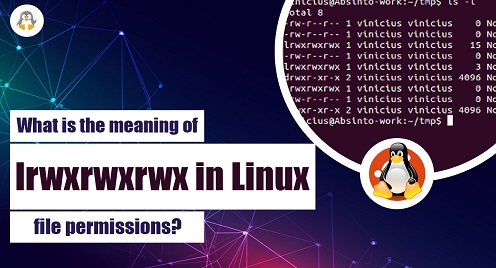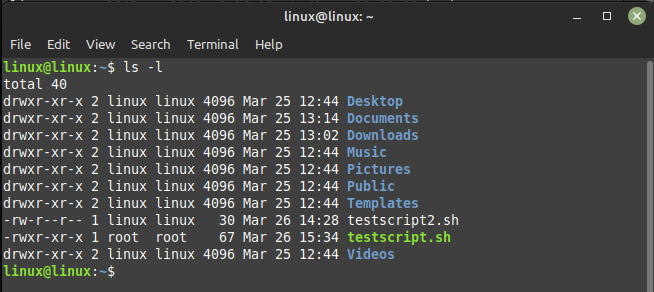
What is the Meaning of lrwxrwxrwx in Linux File Permissions?
In Linux, file and directory permissions are a critical aspect of the file system. When you use the ls -l command to display a list of files and directories in a directory, you may see a string of characters such as lrwxrwxrwx for a file or directory. These characters represent the file permissions in Linux and understanding them is essential to effectively managing and securing your system. This article will discuss the meaning of lrwxrwxrwx in Linux file permissions.
What is the meaning of lrwxrwxrwx in Linux file permissions?
There are three types of authorization that are read (r), write (w), and execute (x) granted to file in Linux and this permission can be changed on the preference of the owner. Next every Linux system has three users that are: owner, group and other users. The file permission can be seen by executing ls -l command in the terminal and below is the output you will get:
ls -l

Like in the image above the testscript2.sh has “rw-r–r–” permissions of read-only permissions for the group and all other users and read and write permissions for the owner.
Here is the breakdown of the permission lrwxrwxrwx for file in Linux:
A symbolic link, which points to another file or directory, is the file type represented by the first character in the “l” string.
- The first “rwx” here denotes read, write, and execute rights for the file’s owner.
- The second “rwx” here denotes read, write, and execute rights for the group users.
- The third “rwx” here denotes read, write, and execute rights for all users of Linux system.
In addition to the basic permissions, there are also special permissions that can be set on files and directories like the setuid ( a special permission bit that can be applied to executable files or scripts. ) permission. It allows a user to execute a file with the permissions of the file’s owner, even if the user does not have those permissions themselves.
Conclusion
The string lrwxrwxrwx in Linux file permissions represents the permissions for a symbolic link, where “l” represents the file type, and “rwx” represents the read, write, and execute permissions for the owner, group, and all other users who have access to the system. Understanding these permissions is essential for effectively managing and securing your system.

